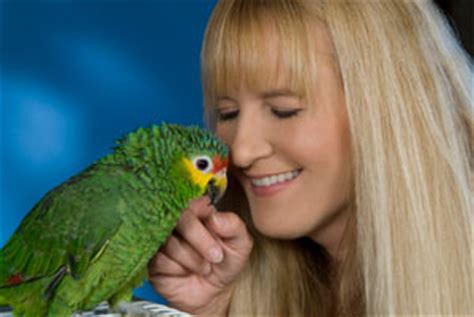Parrot breeding is a challenging but rewarding venture that requires a deep understanding of these captivating birds’ needs and behaviors. This comprehensive guide, “Happy and Polly for Parrot Breeders,” will equip you with the knowledge and strategies to establish a successful and ethical parrot breeding program.

Understanding Parrot Behavior
To become a successful parrot breeder, it’s essential to have a thorough grasp of parrot behavior. Parrots are highly social creatures that form strong bonds with their mates and flock members. They possess complex cognitive abilities, including the capacity for problem-solving, emotional expression, and vocal communication.
Building a Suitable Enclosure
Providing a suitable enclosure is crucial for the well-being of your parrots. Their enclosure should be spacious enough to allow for movement and flight, as well as offering protection from the elements. It should also include various perches, toys, and enrichment items to stimulate their mental and physical development.
Nutrition and Health
A balanced diet tailored to the specific needs of your parrot species is essential for maintaining their health and vitality. Consult with a qualified avian veterinarian to determine the appropriate diet and supplementation regimen for your birds. Regular veterinary checkups are also recommended to prevent and manage any health issues.
Selecting a Breeding Pair
Selecting a compatible breeding pair is a critical step in parrot breeding. Consider the age, compatibility, and health history of potential candidates. It’s advisable to pair birds with similar temperaments and breeding histories to increase the chances of a successful match.
Breeding Success
The breeding process in parrots involves a series of steps from courtship to egg-laying and incubation. Understanding the breeding cycle of your parrot species will enable you to provide optimal conditions for successful reproduction. This includes creating a suitable nesting environment, monitoring egg fertility, and providing adequate nutrition during the breeding season.
Hand-Rearing
Hand-rearing orphaned or abandoned chicks requires patience and expertise. It involves providing regular feedings with a specialized formula and maintaining a clean and hygienic environment. Proper socialization is crucial during the hand-rearing process to ensure the bird’s future well-being.
Socialization and Training
Socialization is a vital aspect of parrot care, especially for parrots intended for companionship. Expose your birds to various experiences, people, and environments to enhance their adaptability and prevent behavioral problems. Training can be a valuable tool for teaching parrots desired behaviors, such as step-up, recall, and trick commands.
Case Studies
Case Study 1: Successful Breeding in African Grey Parrots
A renowned breeder in California successfully bred a pair of African Grey parrots, producing three healthy chicks. The breeder attributed their success to a combination of meticulous enclosure design, a nutritious diet, and close monitoring of the breeding cycle.
Case Study 2: Overcoming Breeding Challenges in Cockatiels
A breeder in Australia encountered difficulties in breeding cockatiels due to infertility issues. After consulting with a veterinarian, they discovered a dietary deficiency that was resolved through supplementation. Implementing this change resulted in a significant increase in breeding success.
FAQs
1. How long does it take for a parrot to reach sexual maturity?
The age of sexual maturity varies among parrot species, but it typically occurs between 2 and 10 years.
2. What is the average lifespan of a parrot?
Depending on the species, parrots can live anywhere from 20 to 80 years or more.
3. Is parrot breeding legal in all areas?
Parrot breeding regulations vary by region and species. Check with local authorities and obtain any necessary permits before engaging in parrot breeding.
4. How much does it cost to raise a parrot chick?
The cost of raising a parrot chick can range from $500 to $2,000, depending on the species, formula, and necessary veterinary care.
5. What are the ethical considerations of parrot breeding?
Responsible parrot breeding practices prioritize the welfare of the birds, ensuring they are raised in suitable conditions and with appropriate veterinary care. Avoid overbreeding and focus on maintaining genetic diversity within the population.
6. How can I get involved in parrot breeding?
Join parrot breeding clubs, attend workshops and seminars, and connect with experienced breeders to gain knowledge and establish a successful program.
Conclusion
“Happy and Polly for Parrot Breeders: A 2025 VS for Success” is your comprehensive guide to becoming a successful and ethical parrot breeder. By understanding parrot behavior, providing suitable enclosures, and maintaining their health, you can create a thriving parrot breeding program that brings joy to both you and your feathered companions. Remember to prioritize the well-being of your birds, engage in ethical practices, and continuously refine your skills to achieve the best outcomes for your parrot breeding venture.
Tables
Table 1: Optimal Enclosure Dimensions for Common Parrot Species
| Parrot Species | Minimum Enclosure Dimensions |
|—|—|—|
| Budgerigar | 48″ x 24″ x 24″ |
| Cockatiel | 60″ x 30″ x 30″ |
| African Grey Parrot | 84″ x 48″ x 48″ |
| Macaw | 120″ x 72″ x 72″ |
Table 2: Recommended Diet Components for Parrots
| Component | Percentage of Diet |
|—|—|—|
| Pellets | 60-70% |
| Fresh fruits and vegetables | 20-25% |
| Seeds and nuts | 10-15% |
Table 3: Common Health Issues in Parrots
| Health Issue | Symptoms |
|—|—|—|
| Psittacine beak and feather disease | Feather deformities, beak overgrowth |
| Proventricular dilatation disease | Vomiting, diarrhea, weight loss |
| Aspergillosis | Respiratory distress, weight loss, lethargy |
Table 4: Training Commands for Parrots
| Command | Description |
|—|—|—|
| Step-up | Step onto your hand or perch |
| Recall | Come to you when called |
| Target | Touch a designated object with your beak |
| Speak | Say a specific word or phrase |





















